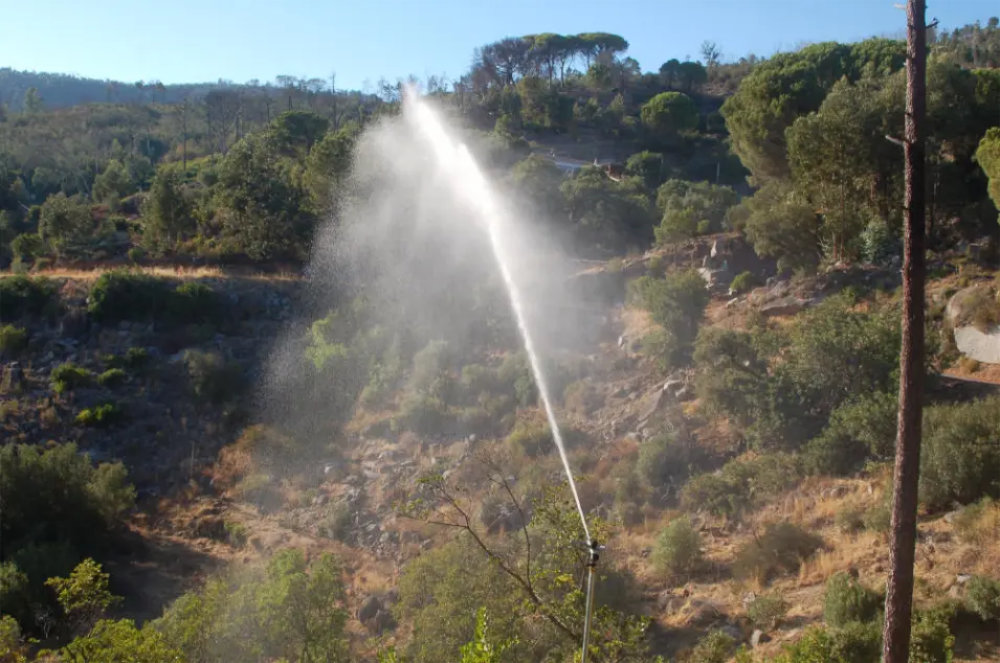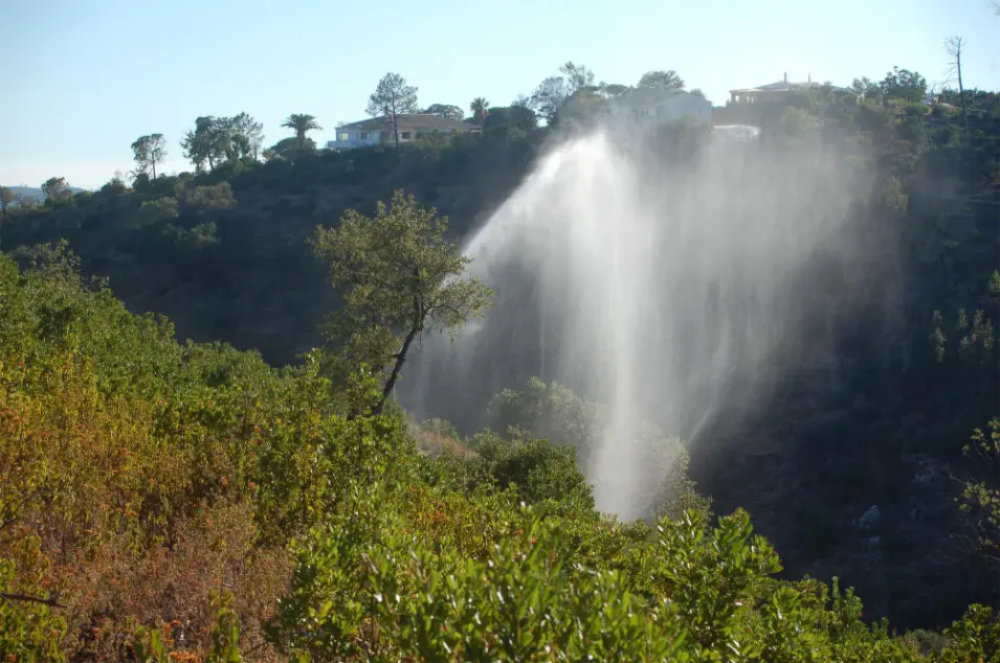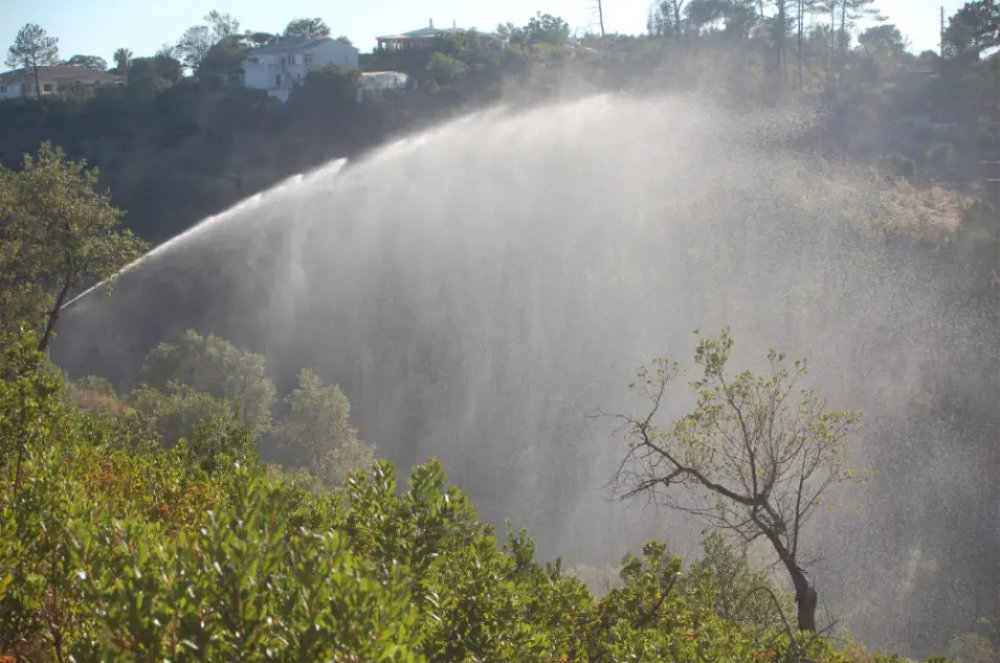Saturday 14th December 2024.

According to the Copernicus Climate Change Service, the EU’s Earth Observation Programme, this current year is set to be the warmest since records began.
I couldn’t look away, for I have always kept a close eye on things, so that I also treat trees if I have to and am allowed to. When the bark beetle invaded my pine trees (pinheiro bravo) and this type of insect threatened to destroy my beautiful mixed forest, I spent a few days looking for ways to outwit the bark beetle so that it wouldn’t eat my hundred-year-old pine trees and cork oaks. I must admit that this plague originally broke out after the forest fires of August 2018, on the burnt black barks of the trees, reaching a height of about three metres from the ground. That’s how high the wave of fire that raged through our forests was. Suddenly the pine trees had small round holes in them, as if a craftsman had been drilling into their bark. And the insects had already laid their eggs under the bark and the larvae were growing faster than the eye could see…
I took my mobile thermometer outside and measured the tree’s temperature. The summer sun was immensely hot. I recorded a temperature of between five and seven degrees higher on the burnt black bark, which is natural if you compare it to the temperature of the tree’s normal grey-green bark. After the fire, the tree was no longer able to defend itself against the plague of insects by excreting sticky resins in which the beetles would become trapped and die. I considered the problem and then a thought crossed my mind. It was the colour black and the heat that had triggered the beetle’s development.
The idea came to me because a few days earlier I had been reading a report by the Potsdam Institute for Climate Impact Research, which stated that the centuries-old Arctic ice that had melted into water would soak up the heat from the sun’s rays instead of reflecting it back, thus fuelling climate change and causing the atmosphere to heat up. And, although they were burnt, the trees in my forest in Caldas de Monchique (Portugal) were still alive, even if they were diseased. Instead of reflecting the sun’s rays and sending them back into the atmosphere, their black barks were absorbing the sunlight, soaking it up and thus robbing the trees of their strength. They had increased the trees’ temperature…
… and, to solve the problem, it didn’t take much more than some white lime, a natural product. Lime reflects the sun’s rays and thus has a cooling effect on the tree bark. Lime is also a disinfectant. So, I mixed the white lumps I had bought from the drugstore with a little water. If you try to imitate this procedure, don’t be alarmed because the mixture hisses, bubbles and gives off smoke, like a witch’s cauldron … and then it calms down again. I prepared a white liquid mixture with which I painted the trees several metres high, and then repeated my painting work the next day. And, lo and behold, the bark beetle was at first irritated by me and then outwitted. In those parts where the tree had turned white, the insect no longer burrowed its way beneath the bark; it ceased its pathological voraciousness and abandoned the previously damaged trees, which had survived those disastrous forest fires but were now in danger of falling victim to another enemy. Hikers passing through the forest would stop and ask me why on earth I was painting my trees white. I simply replied that making art in the forest could also be a pleasant everyday activity…
I had become a painter because I had seen a tree crying and wondered why it did this. It’s only natural to weep profusely after a forest fire, and the wounds on my trees were in desperate need of some soothing treatment. Following this, a friend gave me the idea of doing more than just buying lime from the drugstore, suggesting that I raise a few thousand euros (through crowdfunding) in order to build a sprinkler system for the new forest. In the meantime, I had made a decision that would be of great importance for the last few years of my life: to plant a botanical garden with native trees, including the majestic, beautiful umbrella pines of the Monchique mountains, Monchique oak trees (quercus canariensis), elms, lime trees, alders and ash trees, as well as beeches and many other native species, especially fruit trees such as carobs, peaches, figs, custard apples (annona cherimola), apricots and apples, olive and pepper trees, (yes, you read correctly: pepper trees), laurels and citrus trees… lemons, oranges, clementines, grapefruits… walnut trees, then medlars and persimmons and much more… I live in a paradise.
Never give up.
The crop rotation of the year inspired me to plant in my garden all the native trees that used to exist in Monchique and still do today, even though they have been decimated by the forest fires. I have set myself the goal of preserving Portugal’s traditional tree species, as they are already under more than enough threat from fires and other environmental hazards, such as droughts, climate crises, invasive species, etc. When I was offered half a valley in the mountains for sale in 2017, I had to decide whether to buy it or leave it alone…
And so I stand by my trees and, if necessary, stand up for them unconditionally. Because it is not trees that are a danger, not the forest, but the modern-day technology developed by us humans, with the commercial demands that we place on the forest in order to reap huge profits: from the planting of harmful eucalyptus trees for the paper industry to the transmission of electricity through high-voltage power lines. I do not feel this need for high financial rewards. I enjoy a forest that is as healthy as possible and am happy to simply receive its gifts: the fruits, walnuts, almonds, pine nuts and chestnuts and, of course, the elixir of life, oxygen. Because we take fresh air for granted throughout our lives. But good, healthy fresh air can only be found in the forest and in the mountains, alongside the springs and the clean water in the streams. And so, this nature lover – the journalist in his sailing ship, who sailed from Germany to Portugal – lost his heart and soul when he discovered the still intact nature of the Monchique mountains, looking for and finding a new home here.
And then we installed a powerful sprinkler system to protect this simultaneously new and old forest, so that future forest fires will no longer come too close to my trees. Nine sprinklers have been installed on around three hectares of woodland, capable of spreading 5,000 litres of rainwater per hour across the forest (in case a forest fire is approaching) and drenching it. Like a cannon, the sprinklers spray the cool water 25 metres away and up to ten metres high against the winds that drive the forest fires before them. And, as I write this, I imagine what it would be like if all the neighbours had a sprinkler system like this installed on their property. Let’s nip the forest fires of the hot and dry summer in the bud: with rainwater captured from the rainy winters and stored in cisterns.
Then the Copernicus climate change service may now note that we in Monchique have invented the Columbus egg, and that the problem of forest fires can indeed be solved, because if every tree lover could develop a sprinkler system of their own, they could easily extinguish forest fires with it…
 Eco123 Revista da Economia e Ecologia
Eco123 Revista da Economia e Ecologia





